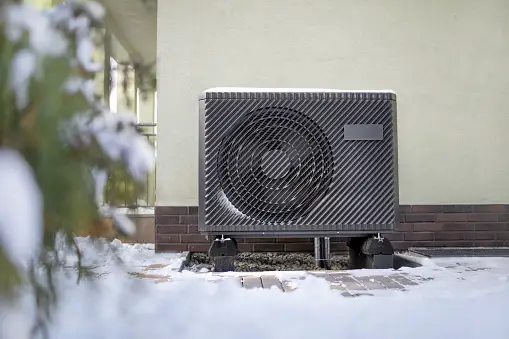As the chill of winter envelopes the US, homeowners are seeking alternatives to fossil fuel heating. This narrative is woven from our personal journey in 2021 when our Cleveland, Ohio duplex, challenged by a failing gas furnace and facing colder winters than our Portland, Oregon residence, raised a crucial question: Could we maintain a cozy environment for our Airbnb guests using heat pumps in a region notorious for subfreezing temperatures?
Global Heat Pump Insights
The allure of cold climate heat pumps was unknown to us at the outset. These devices have efficiently heated homes in the frostiest locales for years, with Scandinavian countries such as Norway, Sweden, and Finland showcasing a significant uptake, signifying a paradigm shift in home heating. The stark contrast between the high adoption rates of heat pumps in these countries compared to the paltry 13% of US homes harnessing this technology was eye-opening. Japan, too, boasts a 90% adoption, unfazed by heavy snowfall in its colder regions.
Despite a breakthrough in the US, where heat pump sales finally outpaced gas furnaces in 2022, their prevalence is mostly in the Southeast where winters are milder. However, Maine stands out with a striking 300% increase in heat pump sales over four years, underscoring their efficiency even in America’s colder states.
Choosing a Heat Pump for Harsh Winters
Without an established network of contractors in Cleveland, we scoured manufacturer websites to identify reputable heat pump installers in the area. This journey led us to discover the technological marvels that render cold climate heat pumps capable of harnessing warmth even in the harshest conditions: variable speed compressors, advanced expansion valves, innovative defrost cycles, and optimized drainage systems against ice. These innovations, combined with sophisticated computing algorithms, set cold climate heat pumps apart.
Informative resources were vital to our decision-making. Carbon Switch‘s reviews and ENERGY STAR‘s classifications pointed us to models designed to excel in cold climates. The meticulous guidance these platforms provided, including specific metrics like HSPF2 scores and how much heat output to expect at various temperatures, was instrumental. Additionally, the Electrify Now checklist ensured we sized our heat pump optimally to achieve peak efficiency and longevity. (Note: Joe is an active Electrify Now volunteer).
Comparing Costs and Making the Choice
Surprisingly, the Daikin Fit heat pump emerged as the most economical solution at approximately $12,000, undercutting the efficient gas furnace by a significant margin. We secured the Daikin Fit, partly influenced by its favorable review on Carbon Switch. The enhanced features of the cold climate heat pumps justified their premium, offering tangible benefits in plummeting temperatures.
Seamless Heat Pump Installation in Cleveland
We waved goodbye to the antiquated gas furnace in late October 2021, embarking on a clean energy journey with a new, responsive ducted heat pump system. Our chosen system harmoniously integrated into our existing infrastructure, from the indoor air handler to the aesthetically familiar outdoor unit. We took proactive steps against potential extreme cold, integrating electric resistance backup heating, although the efficiency of the heat pump itself was maintained down to 5 degrees Fahrenheit.
We adhered to best practices like elevating the outdoor unit, circumventing issues with snow accumulation and ensuring the system was not oversized – a common misconception that often leads to reduced efficiency and equipment lifespan.
Evaluating the Impact on Utility Bills and Guest Comfort
The moment of truth arrived with the utility bills and guest feedback. Concerns loomed over potential spikes in electric costs due to the backup heating and whether our guests would detect a drop in warmth. Astonishingly, the transition was seamless. Utility bills revealed no discernible increase, and our duplex served as a live experiment, with one side powered by heat pumps and the other still reliant on gas. The evidence was compelling, the energy costs between the two were nearly identical, and guest comfort remained uncompromised.
Our transition to heat pump usage in a Midwestern climate has been a resounding success. It’s a testament that renewable heating systems can defy freezing temperatures without imposing additional costs or discomfort. We’re pleased to align with millions of homeowners globally, from Maine to Japan, who have boldly abandoned fossil fuels in favor of efficient and sustainable heat pump technology.

























